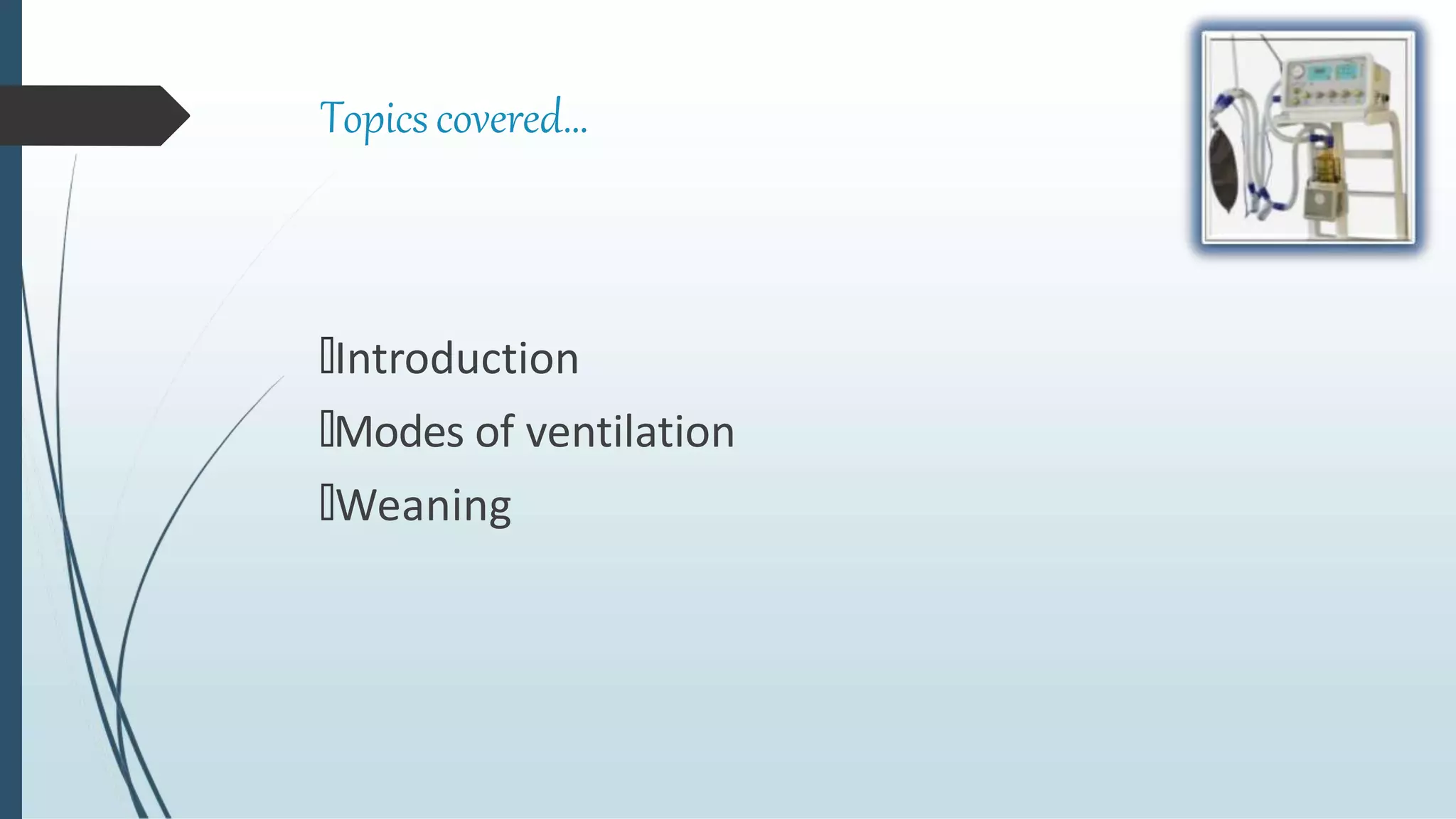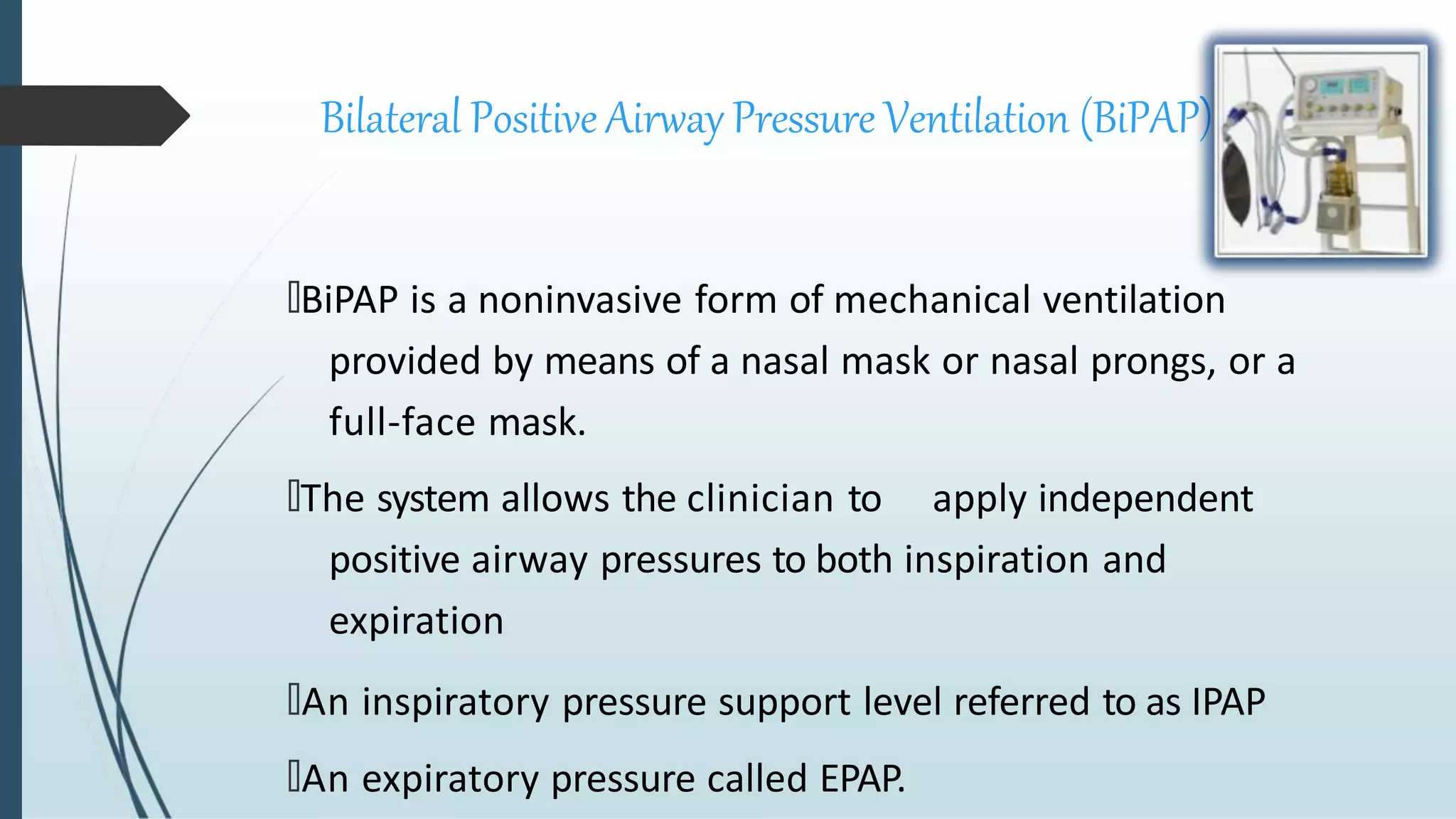The document provides information on various modes of mechanical ventilation and strategies for weaning patients off ventilators. It discusses negative pressure ventilation techniques like iron lungs as well as modern positive pressure modes like pressure control ventilation, synchronized intermittent mandatory ventilation (SIMV), and proportional assist ventilation (PAV). The goals of mechanical ventilation are to maintain ventilation and tissue oxygenation while decreasing the work of breathing. Modes are selected based on the level of support needed and to facilitate eventual weaning from the ventilator.










































































